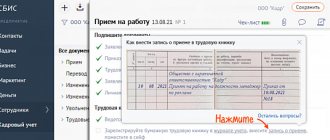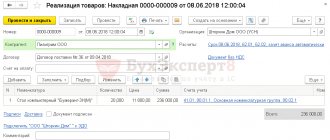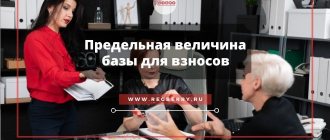Choose a favorable tax base
The simplified tax system has two tax base options with different rates. Tax can be paid on income at a rate of 6% or on the difference between income and expenses at a rate of 15%.
There is a universal rule - the simplified tax system “Income minus expenses” is suitable for those whose expenses amount to more than 60% of income. But you can’t always apply the rule: to make a choice, you need to understand how much net confirmed expenses you have. If you take into account expenses that are not supported by documents, there is a risk that the tax office will doubt the correctness of the calculation of the tax base, assess additional taxes, and impose fines and penalties.
Most often, the simplified tax system “Income minus expenses” is used in trade and production. If you plan to provide services and the costs are small, the simplified tax system “Income” will be more profitable.
Also remember that the simplified tax system “Income minus expenses” has a minimum tax of 1% on income. Therefore, if the simplifier receives a loss or very low profit, the tax will still have to be paid.
In regions, reduced rates may be set - from 1 to 6% and from 5 to 15%, respectively. This must also be taken into account when calculating. For example, there is no point in working on the simplified tax system “Income” with a rate of 6% if the rate on the simplified tax system “Income minus expenses” is 5%.
What is taxed on the simplified tax system?
First, a little theory. In the simplified system, there are two different objects of taxation:
- income;
- income reduced by expenses.
In the first case, income received (from the sale of goods, works, services, as well as some non-sales income) is taxed. Expenses, even those necessary for business, are not taken into account. The standard rate for simplified taxation system Income is 6%, but constituent entities of the Russian Federation have the right to reduce it to 1%.
In the second case, income before taxation is reduced by expenses: proven, economically justified and included in the list of Article 346.16 of the Tax Code of the Russian Federation. That is, the tax base is not all income, but the difference between income and expenses. The usual rate for this option of the simplified tax system is 15%, while many regions for some types of activities reduce it to 5%.
Combine tax regimes
Individual entrepreneurs and LLCs that combine several types of activities can also combine tax regimes. For example, trade both wholesale and retail or run a restaurant and bar with alcohol. For retail, UTII or a patent is more profitable, since the tax does not depend on actual revenue, but is calculated according to standards and is often lower than the real one.
You can transfer retail to UTII or buy a patent (only for individual entrepreneurs), and leave other types of activities on the simplified tax system. From January 1, 2021, UTII will be abolished, so only individual entrepreneurs will have the opportunity to combine modes - they will be able to combine the simplified tax system and a patent. We answered popular questions about the abolition of UTII, the combination of special regimes and the transition period in the article.
Reduce tax on insurance premiums
Insurance premiums for employees and entrepreneurs reduce payments under the simplified tax system. Under the simplified tax system “Income minus expenses”, they are charged in full as expenses, and under the simplified tax system “Income” the tax itself is reduced by 100% for individual entrepreneurs without employees and by 50% for LLCs and individual entrepreneurs with employees.
Example 1. Individual entrepreneur Tonkiy L.K. works for the simplified tax system “Income” with a rate of 6% without employees. His income for the year amounted to 3,000,000 rubles, the tax amount was 180,000 rubles. Insurance premiums for yourself 67,874 (40,874 fixed contributions + (3,000,000 - 300,000) × 1%.
If you do not take into account the deduction, then for the year the entrepreneur must pay contributions in the amount of 247,874 rubles. But the tax can be reduced on insurance premiums, and if you do it correctly, you can reduce each payment, and not just the total amount.
| Reporting period | Cumulative income | Tax according to the simplified tax system | Cumulative contributions paid | Actual tax payable according to the simplified tax system |
| 1st quarter | 1 200 000 | 72 000 | 17 000 | 55 000 |
| Half year | 1 950 000 | 117 000 | 34 000 | 28 000 |
| 9 months | 2 400 000 | 144 000 | 51 000 | 10 000 |
| Year | 3 000 000 | 180 000 | 67 874 | 19 126 |
At the end of the year, the individual entrepreneur must pay an additional 19,126 rubles. The total tax amount will be 112,126 rubles.
Keep records of exports and imports in the Kontur.Accounting web service. Simple accounting, payroll and reporting in one service
Example 2. Turel LLC works on the simplified tax system “Income minus expenses”. Income for the year amounted to 3,000,000 rubles, the tax amount was 180,000 rubles. The organization has four employees with a salary of 50,000 rubles. In each quarter, the employer pays insurance premiums for them in the amount of 180,000 rubles, for a year - 720,000 rubles. The tax payable can be reduced by no more than half.
| Reporting period | Cumulative income | Tax according to the simplified tax system | Cumulative contributions paid | Actual tax payable according to the simplified tax system |
| 1st quarter | 1 200 000 | 72 000 | 180 000 | 36 000 |
| Half year | 1 950 000 | 117 000 | 360 000 | 22 500 |
| 9 months | 2 400 000 | 144 000 | 540 000 | 13 500 |
| Year | 3 000 000 | 180 000 | 720 000 | 18 000 |
For the year, Turel LLC must pay 180,000 rubles in tax, but since the contributions paid amounted to 720,000 rubles, the tax can be reduced by 50%. The amount of tax to be paid will be 90,000 rubles.
What to follow
Three types of expenses reduce the tax. They are listed in paragraph 3.1 of Article 346.21 of the Tax Code of the Russian Federation:
- contributions for compulsory insurance;
- payment of benefits at the expense of the employer;
- contributions for voluntary insurance of employees.
Let's tell you more about them.
Contributions for compulsory insurance
All types of mandatory contributions to the Pension Fund, FFOMS and Social Insurance Fund of Russia (including contributions for injuries) are taken into account.
The tax reduction includes the amount of contributions that the organization paid in a given reporting (tax) period. However, they must be paid within the calculated amounts. For example, the amounts of advances transferred to the funds (above the accrued amounts) do not reduce the tax.
This point must also be taken into account. Contributions, for example for March, paid in April do not reduce the tax advance for the first quarter. But they are taken into account when calculating the advance payment for the simplified tax for the six months. And contributions for December paid in January of the next year do not reduce the tax for the current year, but they are taken into account when calculating the advance payment for the first quarter of the next year.
Benefits at the expense of the employer
The tax is also reduced by the cost of benefits for sick days, which are paid at the expense of the employer. That is, for the first three days of sick leave.
Let us remind you that currently the first three days of illness are paid for at the expense of the company, and the subsequent days at the expense of social insurance funds. This procedure applies exclusively to temporary disability benefits. Benefits for caring for sick family members are paid from the fund starting from the first day of illness.
Voluntary insurance
Another type of expense that reduces tax is payments under voluntary personal insurance contracts. If a company additionally insures its employees, then it has the right to take into account the amounts transferred to the insurance organization when calculating the tax. But only if certain conditions are met:
- these agreements are concluded by the employer in favor of the employees;
- insurance is provided in case of temporary disability of the employee for sick days, which are paid at the expense of the employer (with the exception of industrial accidents and occupational diseases);
- the amount of insurance payment to the employee for the first three days of incapacity does not exceed the legally established amount of benefits;
- the insurance company has a license to carry out the relevant type of activity.
In other words, if the company pays for the first three days of an employee’s illness through insurance (according to established standards), then payments under such an agreement reduce the amount of tax.
Please note: all of the above expenses together can reduce both the amount of tax and tax advances by no more than 50 percent.
The tax period under simplification is a calendar year. Reporting periods – first quarter, half a year and 9 months of the calendar year (Article 346.19 of the Tax Code of the Russian Federation).
Remember also that the amount of tax (advance tax payment) payable is also reduced by previously paid advances.
Reduce your tax by the amount of the minimum tax and losses
Under the simplified tax system, you will have to pay 15% tax even if you make a loss; for this purpose, they came up with a minimum tax - 1% of income for the year. If last year you paid a tax of 1%, then this year you can include in your expenses the difference between the tax at the minimum and standard rates (clause 6 of Article 346.18 of the Tax Code of the Russian Federation).
Example. Based on the results of 2022, Zarya LLC earned 25,000,000 rubles and spent 24,000,000 rubles using the simplified tax system “Income minus expenses.” Tax at the standard rate of 15% - 150,000 rubles ((25,000,000 - 24,000,000) × 15%). The minimum tax is 250,000 rubles (25,000,000 × 1%).
In 2022, Zarya can take into account 100,000 rubles in expenses - the difference between the standard and minimum tax.
What insurance premiums are paid on the simplified tax system?
Insurance premiums are payments for pension, medical and social insurance of individuals. Employers make contributions for their employees, and individual entrepreneurs make contributions for themselves. The founders of an LLC, if they are not included in the staff, do not pay contributions for themselves.
The total rate of insurance premiums is generally 30% of employee benefits. Additionally, a contribution is charged for insurance against injuries and occupational diseases at a rate of 0.2% to 8.5% (depending on the occupational risk class of the main type of business activity).
The amounts of individual entrepreneurs’ contributions for themselves are set at a fixed amount. In 2021 it is 40,874 rubles. If the entrepreneur’s annual income exceeds 300,000 rubles, then an additional contribution must be made - 1% of income above this limit. These payments are mandatory for all taxation systems, except for the tax on professional income (NPD can only be applied by individual entrepreneurs without employees).
And although contributions are not taxes, they significantly affect the overall fiscal burden of a business. Therefore, the Tax Code of the Russian Federation allows taking into account contributions paid for employees and entrepreneurs in all modes, except PSN.
Go out on vacation
Entrepreneurs using the simplified tax system can take a tax holiday and apply a 0% tax rate, that is, not pay it at all. This opportunity is available to individual entrepreneurs from the social sphere, production, science, and consumer services to the population. A zero rate can be applied continuously for two tax periods, but only if this benefit has been introduced in the region. Regions are introducing holidays until December 31, 2023.
To use vacations, there are several requirements for individual entrepreneurs:
- The individual entrepreneur was registered after the introduction of holidays in the region;
- less than two years have passed since registration;
- The individual entrepreneur works on the simplified tax system or a patent;
- there are no interruptions in work on the simplified tax system or a patent during two tax periods;
- the type of activity is covered by holidays in the region;
- compliance with all additional restrictions established by the region.
There is no special procedure for switching to holidays; there is no need to inform the inspectorate about this. The main thing is to ensure that the conditions are met, then you will be able to avoid paying taxes and advance payments for two years, starting from the year of registration.
Move to an area with reduced rates
We have already said that 6% and 15% are standard rates under the simplified tax system. But constituent entities of the Russian Federation can choose types of activities for which rates will be reduced. Organizations and entrepreneurs can “move” to a region with lower rates in order to pay less taxes.
For example, in St. Petersburg, under the simplified tax system “Income” the rate is 3%, and under the simplified tax system “Income minus expenses” - 5%. The rate applies to carriers, hotels, catering, media, R&D, retail trade, manufacturing, consumer services, exhibitions and other activities listed in the law of St. Petersburg dated 05/05/2009 No. 185-36 (as amended on 07/29/2020) .
In order for a business to benefit from a preferential rate, the entrepreneur needs to change his registration, and the organization needs to change its legal address. At the same time, you can work in the same region in which you worked before. The law does not prohibit this. An individual entrepreneur is not tied to his place of registration and can work anywhere, but the organization will need a separate division.
Kontur.Accounting is suitable for organizations and entrepreneurs using the simplified tax system. Keep records of income and expenses, reduce tax on insurance premiums, calculate the minimum tax and report simplified accounts automatically. Try all the features of the service for free for 14 days.
“Covid” assistance in the declaration under the simplified tax system
Payments to taxpayers from affected industries:
- salary subsidy 12,130 rub. (Resolution of the Government of the Russian Federation dated April 24, 2020 N 576);
- subsidy for disinfection 15,000 rubles. + 6,500 rub. (Resolution of the Government of the Russian Federation dated July 2, 2020 N 976);
- preferential loan 2% (Resolution of the Government of the Russian Federation dated May 16, 2020 N 696).
Section 3 of the declaration under the simplified tax system
filled in upon receipt of targeted financing, targeted receipts and other funds specified in paragraphs. 1-2 tbsp. 251 of the Tax Code of the Russian Federation (Order of the Federal Tax Service dated February 26, 2016 N ММВ-7-3/ [email protected] , clause 9.1.).
Targeted financing funds have been determined:
- pp. 14 clause 1 art. 251 Tax Code of the Russian Federation
Tax-free “coronavirus” subsidies under the simplified tax system refer to a different norm:
- pp. 60 clause 1 art. 251 Tax Code of the Russian Federation
Separate accounting of income and expenses is not maintained, as provided for in paragraph 2 of Art. 251 Tax Code of the Russian Federation.
In the declaration under the simplified tax system, it is necessary to indicate the target funding code from Appendix No. 5 - there is NO separate code for these subsidies. A report on the use of “Covid” subsidies is NOT provided, therefore the funds received:
- DO NOT apply to targeted financing
Means
- NOT reflected in section 3 in the declaration under the simplified tax system
The loan for resumption of activities is NOT reflected in section 3 because Does NOT apply to targeted financing (clause 14, clause 1, article 251 of the Tax Code of the Russian Federation).
See also:
- Anti-quarantine BP
- How to reflect the receipt and expenditure of subsidies under Resolution No. 576 on the simplified tax system?
- How to reflect the receipt and expenditure of subsidies for the prevention of coronavirus on the simplified tax system
- How to take into account a preferential loan at 2% under the simplified tax system for income and expenses?
- Non-repayable loan at 2% from 2022
- The Ministry of Finance told how to keep accounting records in the conditions of coronavirus
- Receiving and spending a loan under Resolution No. 696 on the simplified tax system
- How to account for coronavirus subsidy income and expenses?





